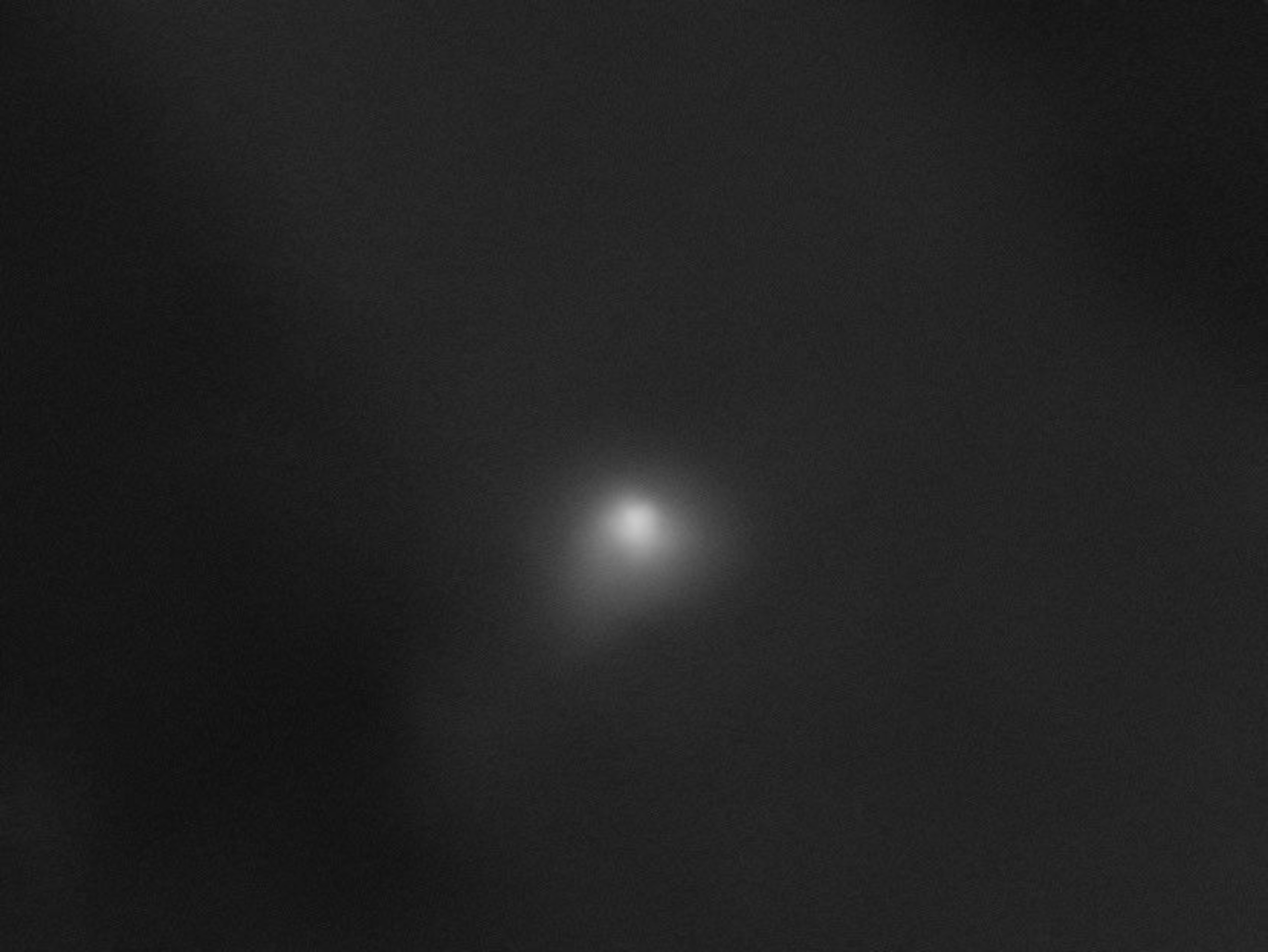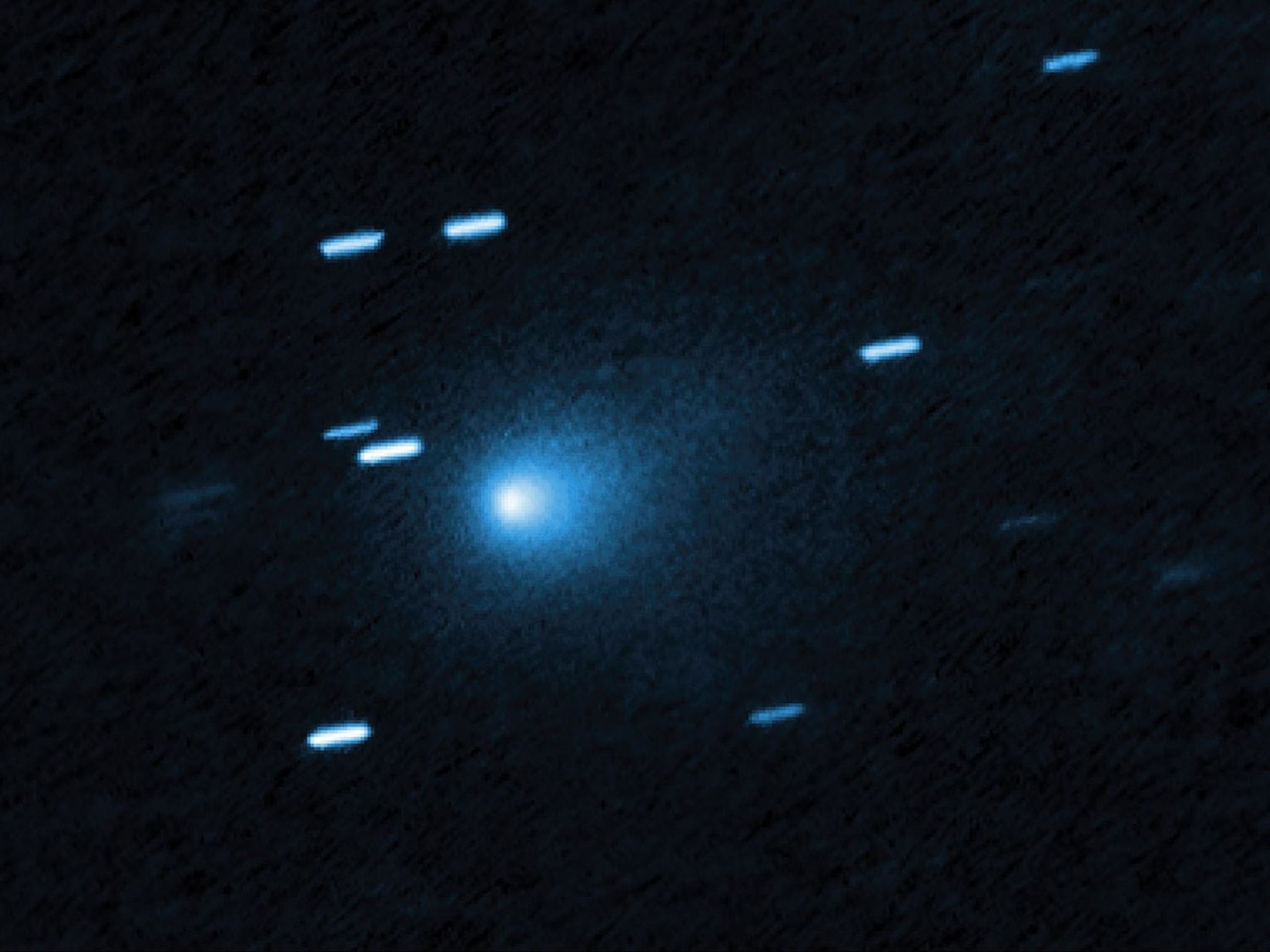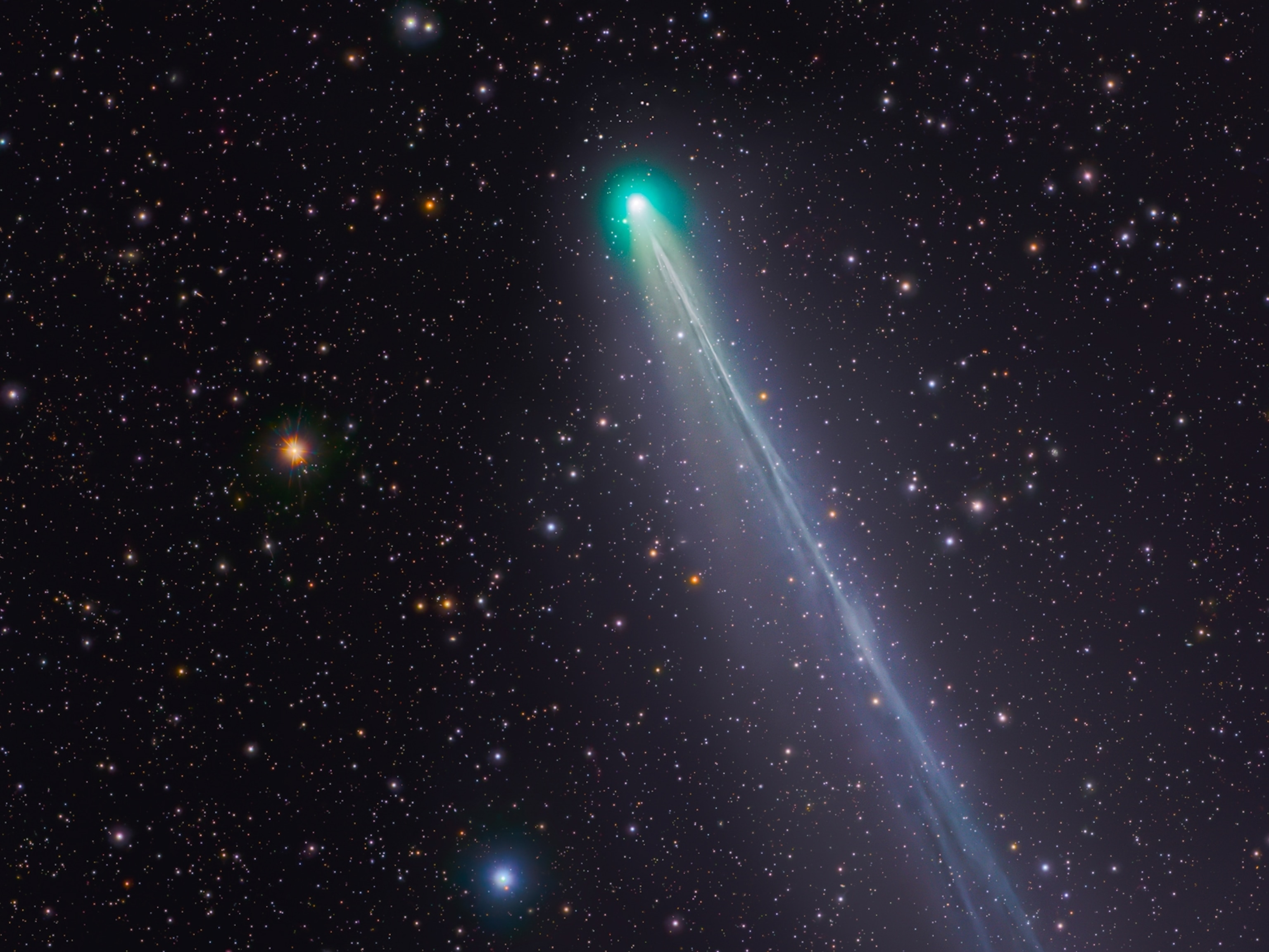
Watch a Comet Fly By the Moon and Venus
Comet Catalina is putting on a show that will only get better over the coming weeks.
Skywatchers are getting an early holiday gift in the form of a brightening comet sweeping across early morning skies. This is comet Catalina, in the latter half of its one-way trip through the inner solar system.
Formally known as C/2013 US10, comet Catalina is now climbing the eastern morning sky and emerging in the pre-dawn twilight in the Northern Hemisphere. Observers report that it shines at magnitude 6, just shy of being visible to the naked eye but easy to spot with binoculars. And over the course of the next few days, the comet will glide by two of the brightest objects in the night sky, Venus and the moon, making it a cinch to find even for novice stargazers.
The icy interloper gets its name from the Catalina Sky Survey, which searches for comets and near-Earth asteroids using two telescopes in Arizona and discovered comet Catalina on Halloween 2013. According to the comet’s calculated trajectory, it probably originated from the Oort Cloud, a frozen reservoir of comets located beyond Pluto. A passing star may have disturbed the comet, which then got pulled toward the inner solar system by the sun’s gravity.
On its inward journey earlier this year, until mid-November when it rounded the sun, comet Catalina was visible in the Southern Hemisphere. Now on the return journey to the outer solar system, it is putting on a final sky show in the north.
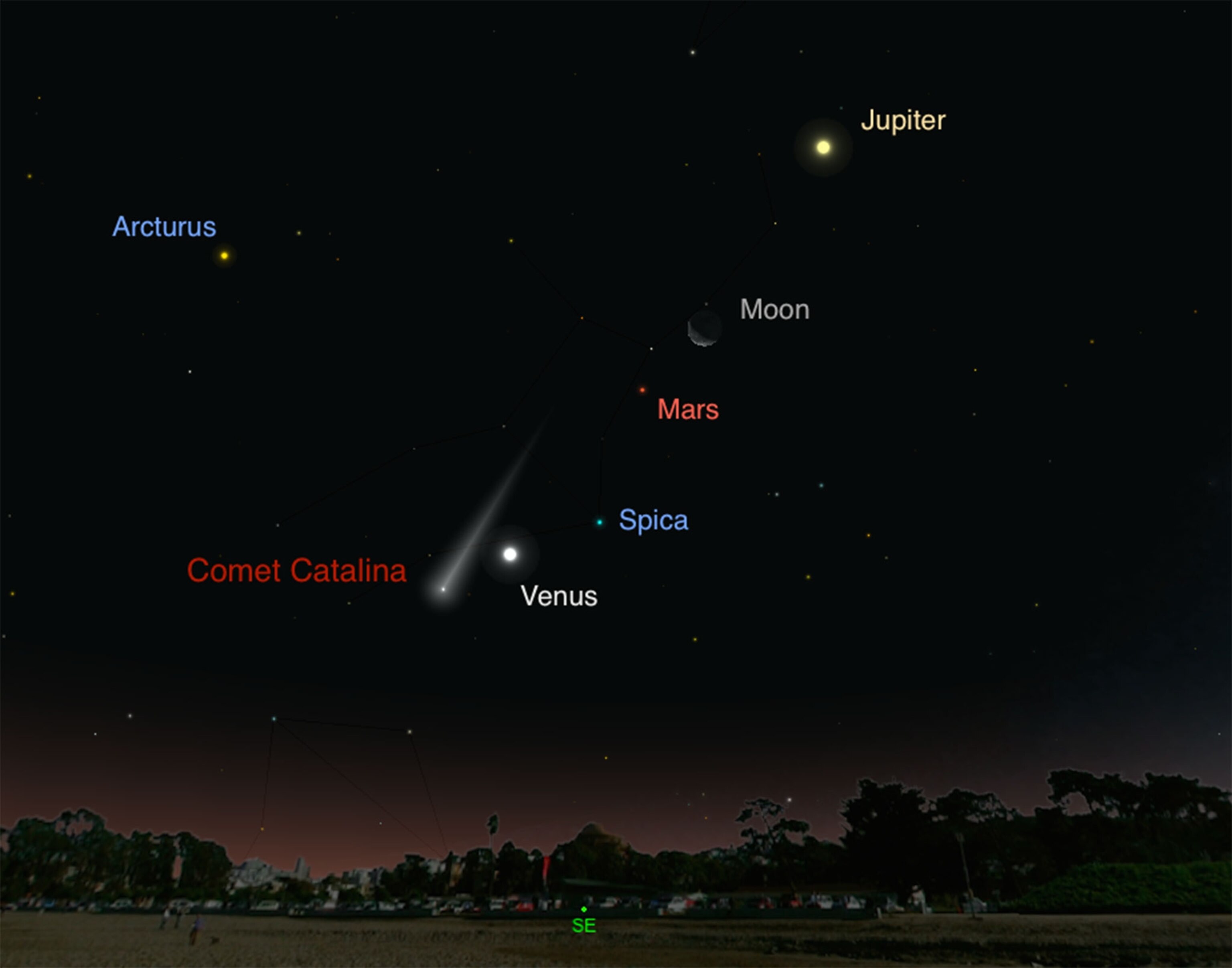
See For Yourself
To hunt down comet Catalina, face southeast about an hour before local sunrise. The comet will be some 15 degrees above the horizon, about equal to the span between your pinky and index fingers held at arm’s length. The comet will be found within the constellation Virgo, the maiden.
Look for a small, fuzzy patch of light through your binoculars. Small telescopes may even show off hints of two splayed tails. Backyard amateur astrophotographers have been snapping amazing close-up images of the comet that clearly show these tails of gas and dust pointing away from the sun.
On Monday, December 7, the comet will appear near the bright planet Venus, the most brilliant starlike object visible in the morning sky. The two objects will be separated by only 4 degrees, less than the width of your three middle fingers. Perched just above the planet will be a razor-thin crescent moon.
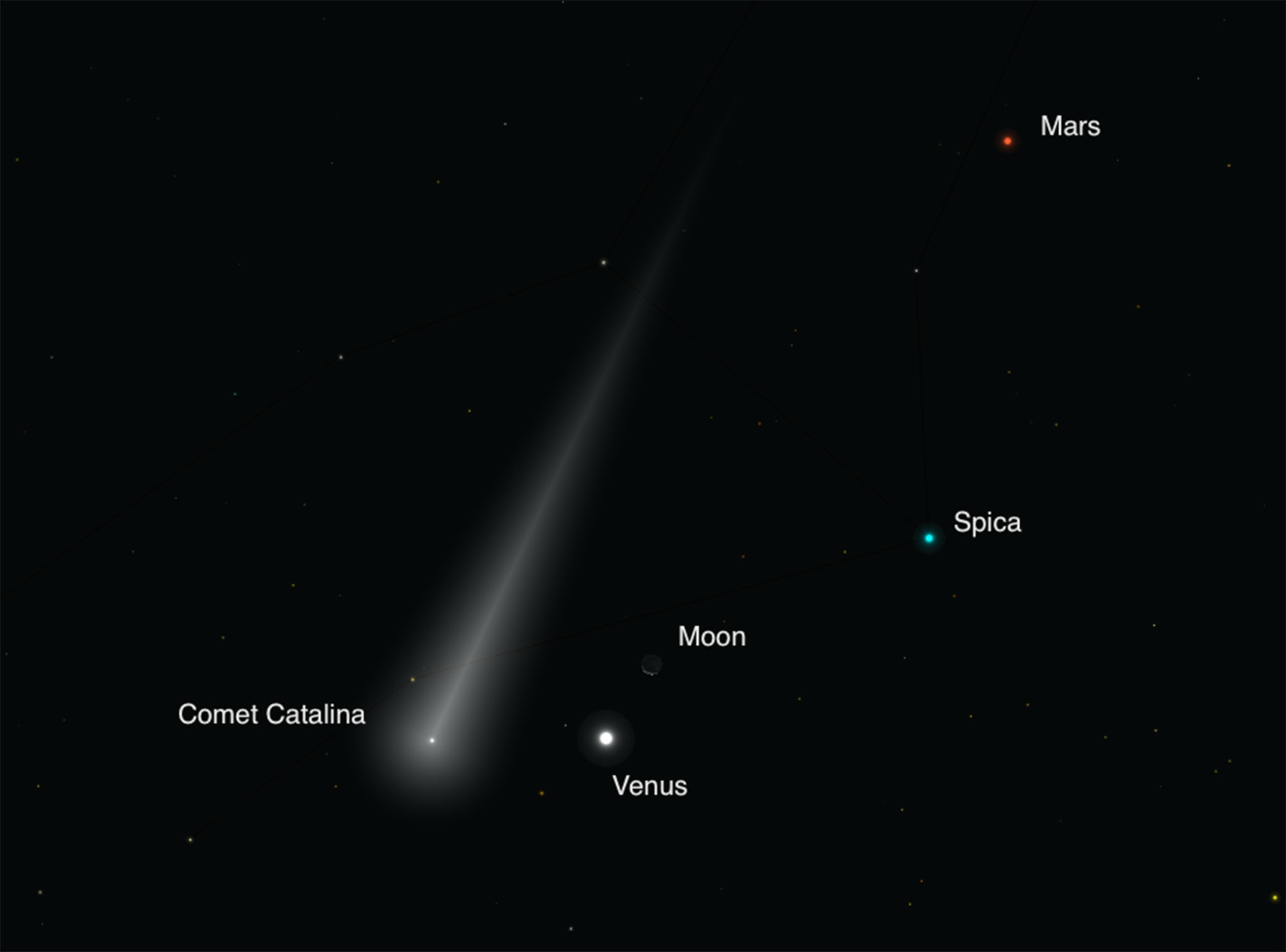
As the days pass, comet Catalina will appear to climb higher in the sky and may even become bright enough to be seen with the naked eye. (Sky and Telescope offers this detailed finder chart outlining the comet’s pathway.) By January 1, it will make a close pass by the bright orange star Arcturus, coming within a half degree, a separation equal to the width of the full moon disk.
Only two weeks later, the comet will skim by the handle of the Big Dipper in the constellation Ursa Major. And on January 12, Catalina will make its closest approach to Earth at 67 million miles (108 million kilometers), when it may be visible to the naked eye around local midnight in near overhead skies.
Clear skies!
Follow Andrew Fazekas, the Night Sky Guy, on Twitter, Facebook, and his website.



